Sketchbook Tour - Drawings by Vladimir London
Enroll in the Life Drawing Academy now!
Sketches by Vladimir London, Life Drawing Academy tutor
In one of my previous videos, I briefly showed a few sketchbooks and received many comments asking to show my sketches in more detail. When making sketches, I was not planning to show them to anyone. These were disposable doodles for my eyes only. Some sketches were done because I was bored, others had some purpose – for taking traveling memos, doing anatomy drawing exercises, and so on. Nevertheless, I think I can show you some of my sketchbooks, quickly flipping through pages.
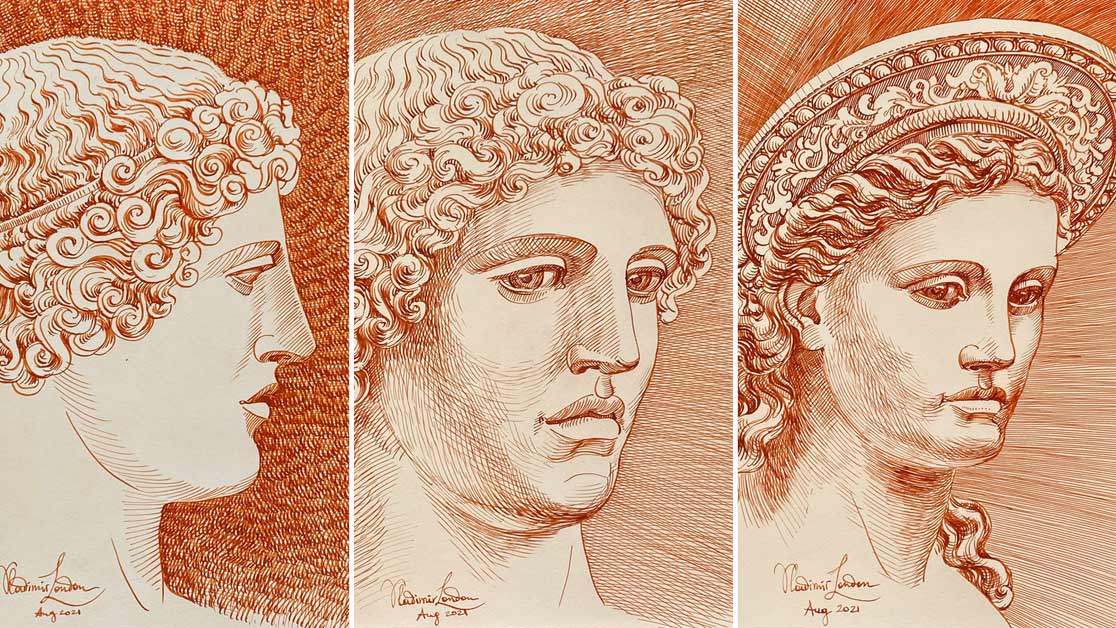
Here's the book I used while travelling to Rome, in Italy. This rather small, pocket size sketchbook is easy to carry around. Size matters when drawing in public places, like in museums, for example. You do not want to spend too much time on every sketch. A small drawing takes less time. Most of my sketches are done in under five minutes. There are many sketches I've done in different museums in various countries. If you would like to see those drawings, leave a comment. I will make a separate video on this topic.

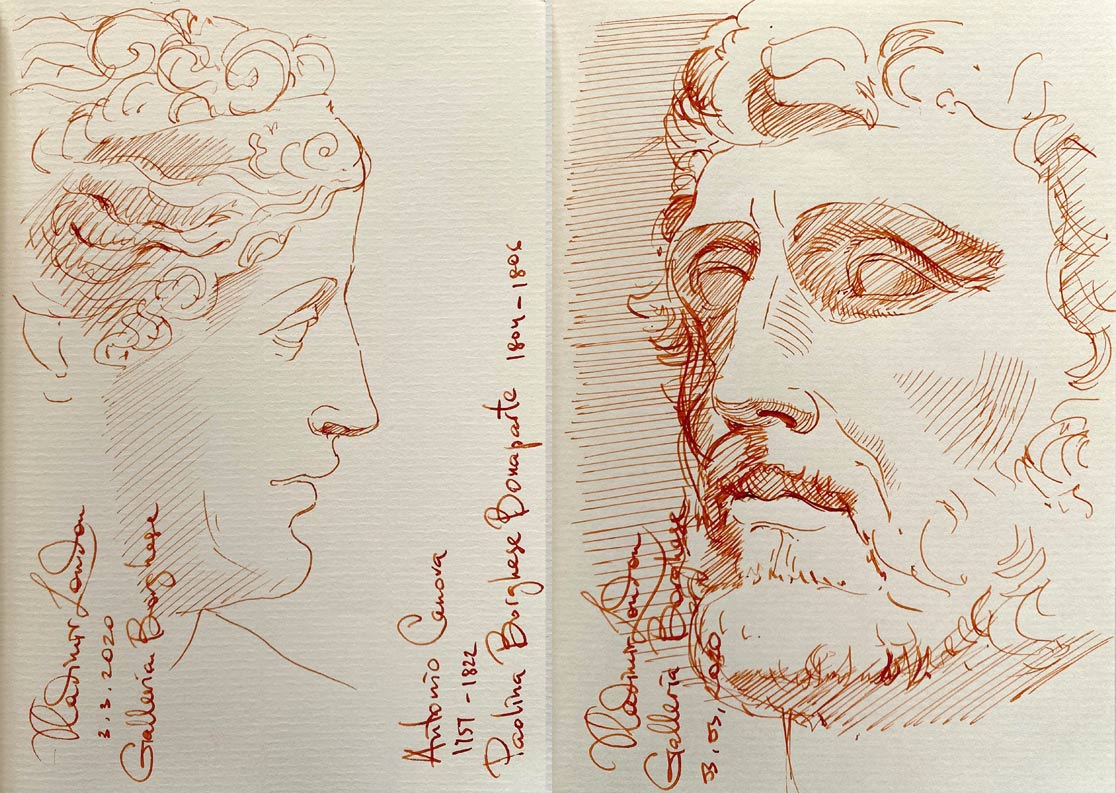
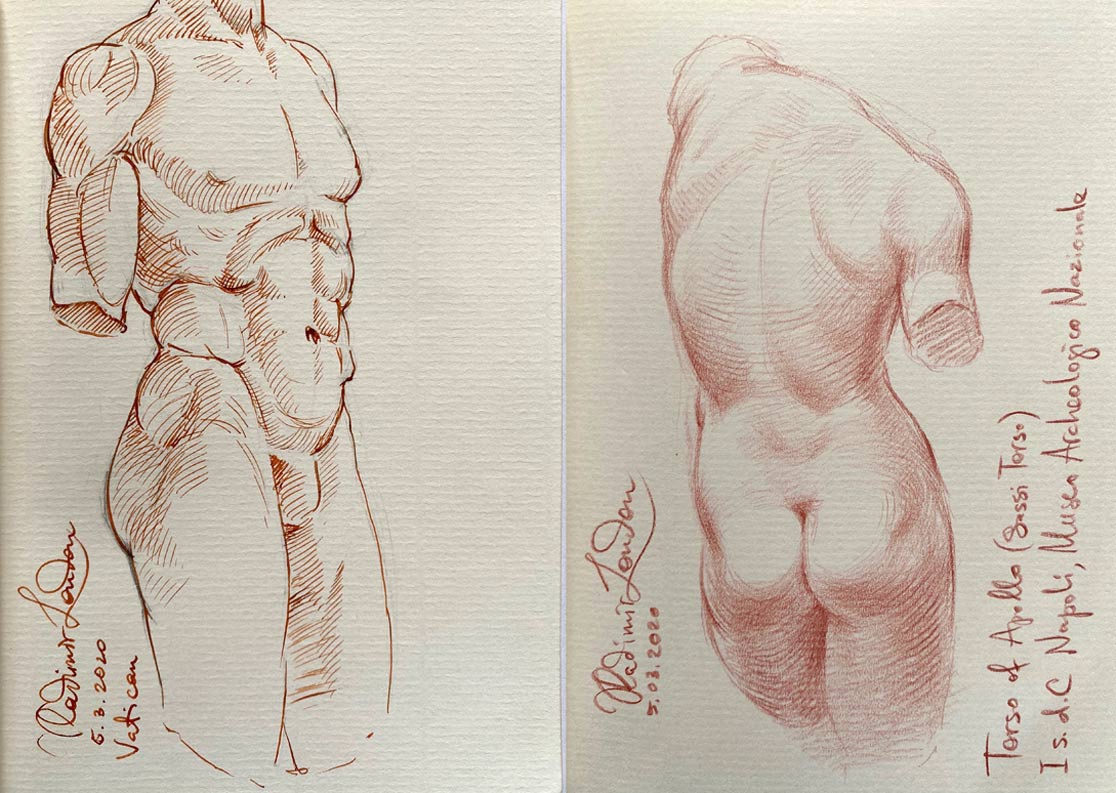
If you don't have museums nearby, don't use it as an excuse for not making sketches. You can draw from life whatever you see around you. If drawing from life is not your cup of tea, sketch from memory and imagination. However, if you do have access to classical sculptures, use every opportunity to draw them. Draw portraits, busts and full figures, whatever you can find. Learning from the great masters is the best way to get good taste in art. Ancient and baroque sculptures have idealized proportions. Sketching such sculptures will help you to learn classical canons of proportions. Such knowledge will influence the quality and style of artworks you produce. The history of arts is full of examples of great masterpieces. Learn from the best to raise your level of skills.
Please do not ask me what sketchbooks I use. I just buy any sketchbook available and fill it with drawings. The reason I don't care much about the particular kind or quality of sketchbooks is because they don't last for a long time. Sometimes I complete a sketchbook in just one day.
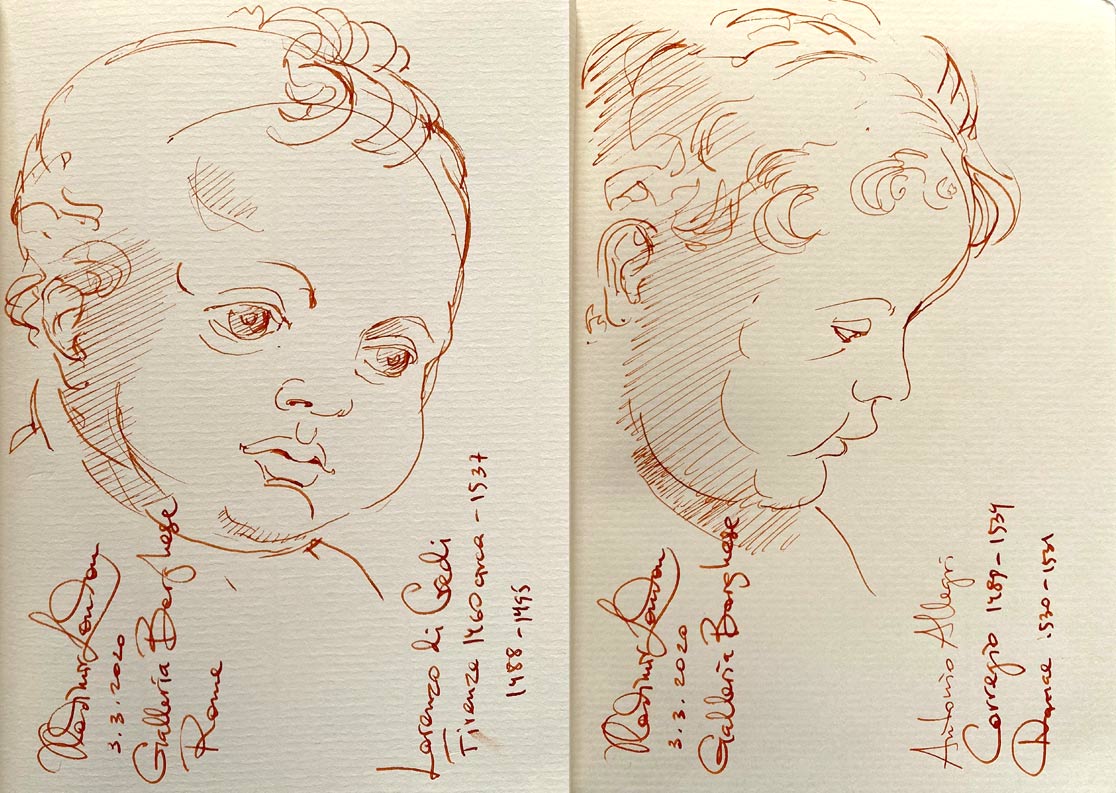
Here are two good tips for you. First, buy cheap sketchbooks; and second, make bad drawings. I know this sounds strange, but here's the thing. Should you purchase some fancy and very expensive book for drawing, you might not use it at all. And if you hope that your new good sketchbook will be filled with great drawings, you might get disillusioned after the first few sketches. This could block you from sketching altogether. So, the contradiction is – the better a sketchbook, the less well it is suited for sketching. Get cheap and disposable books at different sizes with the intention of making fast and ugly sketches. This way, you won't have any fears of spoiling your book with unprofessional drawings. The aim here is quantity, not quality. In sketching, quantity will inevitable turn into better quality with time. But you have to keep sketching to make this transformation.
Also, please do not ask me what king of pens and pencils I use for sketching. Use whatever pencil you already have. It doesn't matter. You can test different pencils and mediums and, with time, you will find your favorite. I don't want to impose my personal preferences upon you and tell that some pen or pencil is better than others. It is down to your own choice, not someone else preferences.
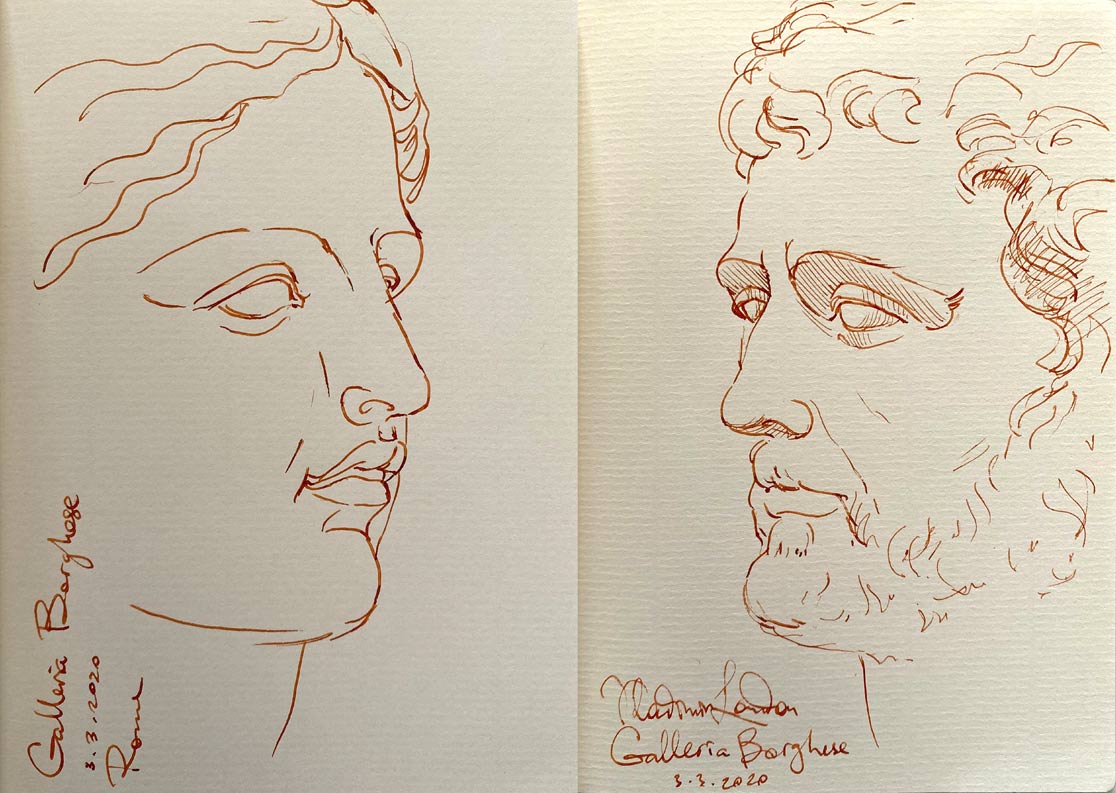
As you can see, the majority of sketches in these books happen to be in pen and ink and sometimes in gel pen. The reason I settled on this media is because a pen makes distinct lines and every line counts. If I draw a line it stays as is. I cannot erase and correct it. This makes me go forward. There is no option to redraw the same image. I have to make another one to fix mistakes. Talking of mistakes, I probably don't have a single sketch in this video that doesn't have them. Every single picture you see here is distorted, disproportionate or imperfect in so many other ways. And this is fine because the purpose of these sketches is different. I do not aim to make perfect artworks while sketching. I sketch to practice, to think and to learn. I sketch idealized faces to practice the proportions of a human head, its anatomy and construction. These sketches are full of mistakes, but it is not important. What really matters is that I see those mistakes and therefore I can work on improving them. The unforgiving medium of pen and ink does not allow me to fix errors in sketches. So, I have to draw new ones to improve. This keeps me going and with every new sketch I learn something new. Sketching anatomy and construction of a human body is the great way to learn good figurative drawing skills.
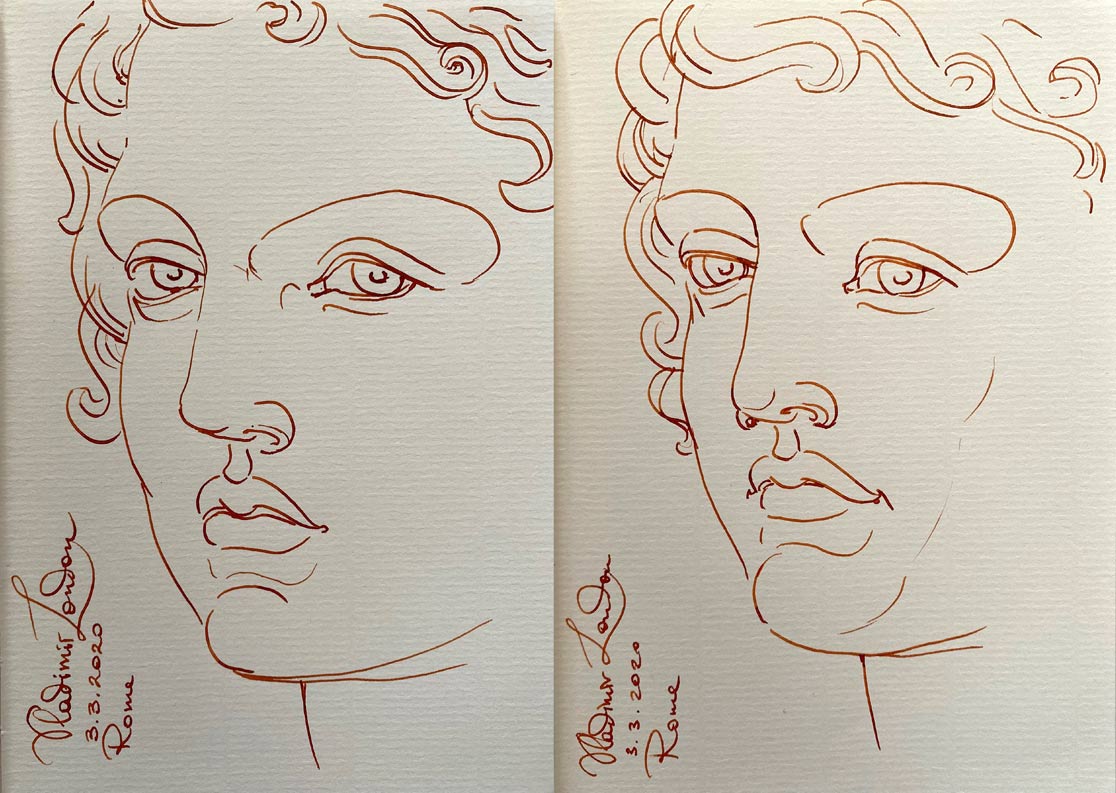
As an art tutor, I have heard so many times similar excuses from different art students that they don't draw figures because they don't have models, that hiring a model is expensive, they don't have access to classical sculptures, they don't have local life drawing classes and so on. After checking such students' artworks, I have to say than in the majority of cases, those artists are not ready for drawing figures from life because they lack more basic skills of constructive drawing and the knowledge of human anatomy, construction and proportions. You do not hire an expensive Lamborghini to learn driving. Instead, you learn traffic rules, and the theory of driving, and take practical lessons using much cheaper cars. When your driving skills are good enough, you may think of taking a ride in a Lamborghini. The same applies to drawing. You do not start learning figurative drawing by hiring life models. There are so many things to learn to get prepared for life drawing. You need to be fluent in constructive drawing principles, you need to know human anatomy for artists, you need to know proportions of a human head, face and body by hard.
Here's a quick test for you to check how ready you are for life drawing. Can you name 15 principles of constructive drawing? Do you know at least 20 proportions of a head? Can you list 20 proportions of a body? Do you know points of origin and insertion of 100 main muscles? If not, how would you make sure that your figurative drawings are proportionate if you don't know what proportions to check? How would you draw pronation and supination of an arm if there is no knowledge of muscles under the skin? How would you draw a portrait if there is no knowledge of skull construction? I hope you see the benefit of making disposable sketches to learn those skills before taking on life drawing.
Although I completed my art education many years ago, I still make sketches to learn new things and to keep this knowledge fresh. The challenge with the knowledge of human anatomy, is that it fades away if you do not use it. Should you know this subject well, it will stay with you; but when you make figurative artworks, you may forget to use it simply because of a lack of constant practice. That is why I sketch to keep my knowledge fresh and skills sharp.
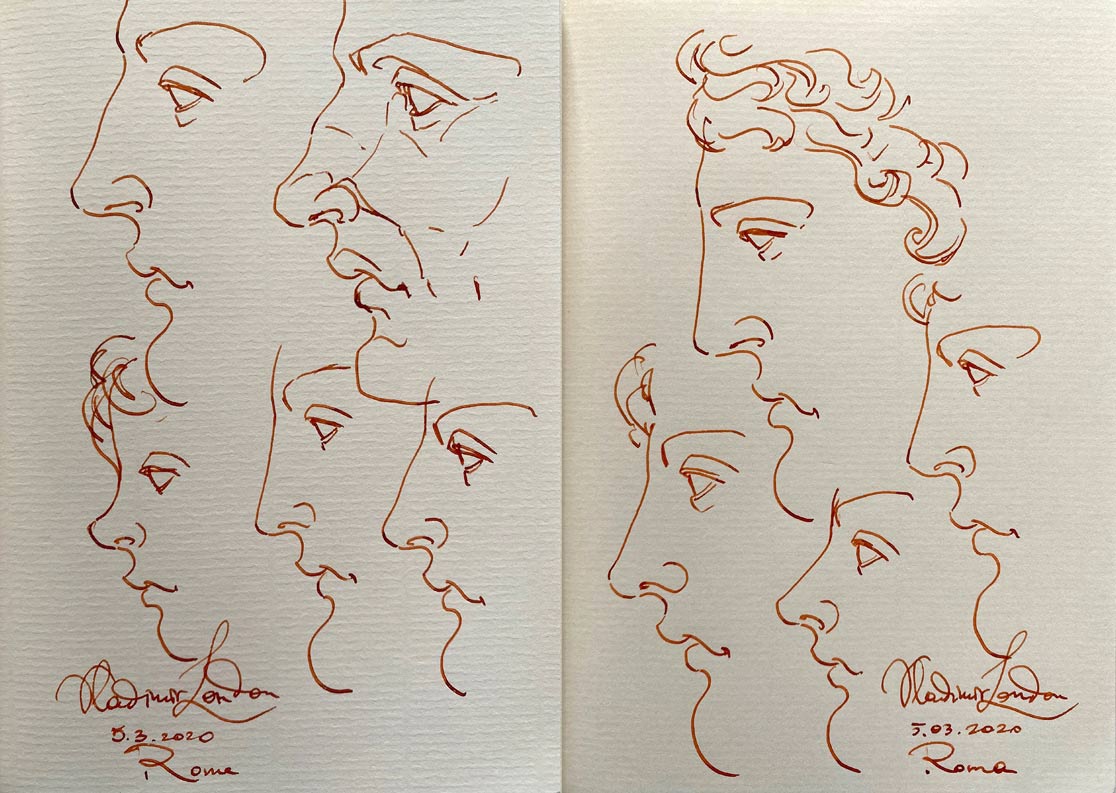
One of the topics that interests me is making classical portraits from memory. As you can see, these portraits are not perfect. But this is not about perfection. I draw portraits from different points of view to practice what I know about human head construction, anatomy and proportions. This knowledge is used almost on autopilot. For example, if you know that the line of the eyes divides the height of a human head exactly in half, you do not need a model to observe this proportion. You just simply draw what you know. There are many more proportions of a human head that are explained in depth in multiple video lessons of the Life Drawing Academy course.
At Life Drawing Academy, you can learn how to draw portraits and figures from life, memory and imagination. In this course, I explain three different classical canons of proportions as well as demonstrate hot to draw portraits and figures step-by-step, starting from a blank sheet of paper and finishing with fully rendered artworks. Here are just a few examples of video lessons in this course. In the video lessons, you will discover how to draw a skull, how to draw facial features, how to draw portraits, proportions of a human head, classical proportions of a human figure, how to draw standing, sitting and reclining figures and so on.
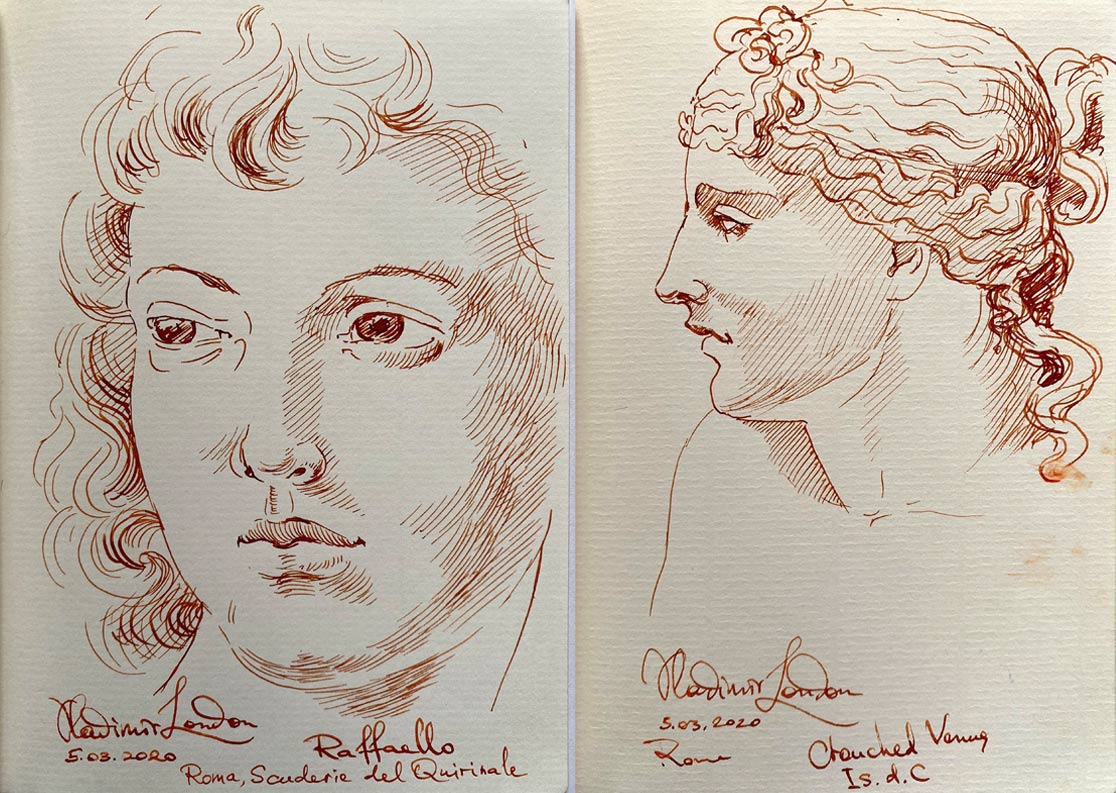
The best thing about this academy is that it offers personal tutoring by professional artists and art teachers. Today, this is the only course in the world where you can get one-to-one art tutoring and get high quality art education in the comfort of your home. This is the only place where a drawing curriculum will be designed just for you, according to your individual level of art skills and needs. No art college would ever offer the same service. Such personal tutoring is provided in the Life Drawing Academy Correspondence Course. What makes this course unique is that nowhere else would you get unlimited lifetime tutoring for a one-time low fee.
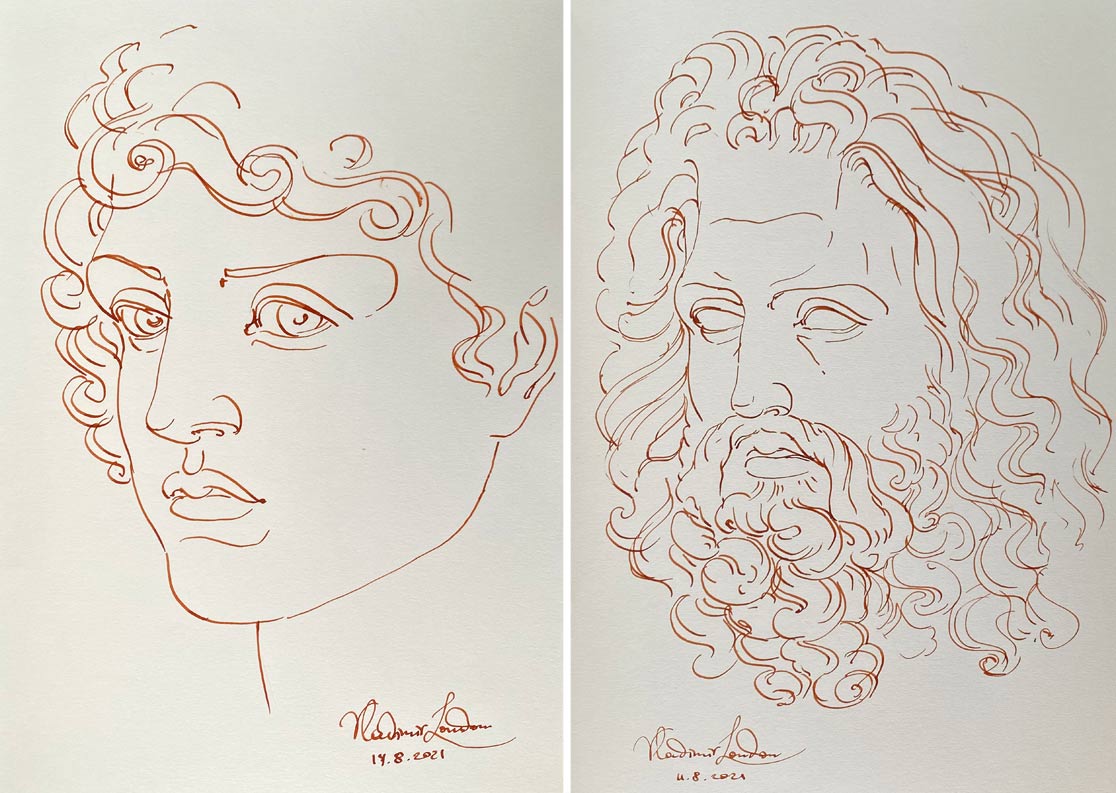
In this course, you will receive in-depth critique of every artwork you submit. Academy tutors will point out mistakes you make, explain how to fix them and how to improve your drawing skills. As a Correspondence Course student, you will receive up to 100 drawing tasks according to your custom-designed curriculum. Every task will come with an in-depth explanation and demonstration on how to do it. This course is not just about portraits and figures. Your individual curriculum will be designed according to your level of skills and will take into account everything you want to learn about drawing. For example, if you are a complete beginner, drawing human figures is like riding a Lamborghini without getting a driving license first. There is no hope of making a perfect portrait if you don't know how to hold a pencil the right way. And believe me, there are many students who graduate from contemporary art colleges without such skill. So, to give you the necessary skills and know-how, we will show you all you need to know about drawing before taking to the advanced topics of making figurative artworks. Such know-how will include the right ways of using drawing materials, the knowledge of constructive drawing principles, composition, golden proportions, proficient ways of rendering tonal values, good style of pencil hatching, and many other things that you need to draw on a professional level. If you are interested in drawing still-life, interior and exterior, landscapes and scenery, animals and so on, these genres will be included into your curriculum as well.
Making sketches is just one small part of the art education you will receive in the Life Drawing Academy Correspondence Course. This course will cover all you need to know, from traditional drawing techniques to anatomy for artists and figurative drawing. For a one-time low fee, you will get a lifetime membership and can study at your own pace. A dedicated team of art tutors will walk you all the way step-by-step from your current drawing skills to the advanced level.
To learn good drawing techniques, enroll in the Life Drawing Academy course:
Online Course
A self-study, self-paced course for you to learn fundamental methods of classical drawing and improve life drawing skills by watching video lessons and doing assignments
- Unlimited access to 52 life drawing video lessons
- Lifetime membership without deadlines
- Unlimited support from the Academy tutors
- Constructive critique of your artworks
- Member access to the Academy's Art community
- Place in the Academy's Students Gallery
- Exclusive members-only newsletter and bonuses
- Life Drawing Academy Diploma of Excellence in your name
One-time payment - Lifetime membership
$297 USD
Personal Tutoring Online + Online Course
The ultimate choice if you who would like to receive personal, one-to-one tutoring from the Academy teachers, which is custom-tailored to your skills and needs
- Everything in Online Course, plus:
- Dedicated team of art tutors
- Assessment of your current level of drawing skills
- Personalized curriculum tailored to your skills and goals
- Up to 100 drawing tasks with by-task assessment
- Unlimited one-to-one personal coaching with detailed per-task instructions and feedback
- Artwork critiques and results-oriented guidance
One-time payment - Lifetime membership
$997 USD




